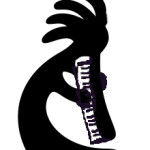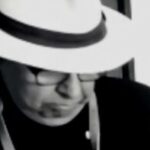Reed material
- This topic has 6 replies, 3 voices, and was last updated 9 months, 3 weeks ago by
 Daren.
Daren.
-
AuthorPosts
-
June 20, 2023 at 5:25 pm #14928
 KevinParticipant
KevinParticipantHave any of you builders thought about trying a different material for the reeds?
I’m thinking the cane they use for sax/clarinet reeds or maybe some sort of wood would produce a warm tone.
I don’t know the level of tediousness or if it’s even physically possible to produce free reeds from an organic material.
I know there have been cheap harmonicas with plastic reeds. I don’t know what sort of results 3D printing would produce.
Anyway, just something I have been musing for a long time.June 22, 2023 at 11:21 pm #14934 DarenKeymaster
DarenKeymasterHi Kevin
I’ve thought about this. Though the reeds from sax, clarinets, oboe etc are a different sort of reed, not suitable for free reed instruments.
Apparently the Sheng, the original free reed instrument, used to have bamboo reeds when they were first made. 3D printing isn’t accurate enough yet for reeds, they have to be so perfect, they take a long time to make each one.
I know @david-b has thought about making reeds. Also, concertina makers sometimes make their own reeds, You could use a laser cutter to make the frames and tongues, but there’d still be a lot of finishing work.
I think you should make some!
July 2, 2023 at 11:09 am #14945 DarenKeymaster
DarenKeymasterJust saw this book from an accordion reed collector, who says he has reeds made from ivory, iron, brass, zinc, bronze, aluminium, plastic, silver and some with wooden bases
July 2, 2023 at 11:34 pm #14947 Melodica-MeParticipant
Melodica-MeParticipantThanks Daren for the info on this book, I just ordered it and looking forward to the read. Reed making is something I would really like to try someday and understanding the use of past material used is really interesting to me. 🙂
Melodica-MeJuly 4, 2023 at 11:42 am #14950 DarenKeymaster
DarenKeymasterI ordered it too!
It’s fascinating and inspiring, though many of the small photos lack enough detail to see clearly what’s going on. It’s not the author’s fault, just Amazon printing quality. I just ordered the Kindle version – its much better – you can zoom in closely to high res images.
Anyone interested in reeds, get this book (Kindle edition)!
July 5, 2023 at 5:38 pm #14951 KevinParticipant
KevinParticipantThat’s interesting! Does he make any mention of what the different materials sound like or reports of what they sounded like? Maybe all of this work has already been done for us.
July 11, 2023 at 11:23 am #14959 DarenKeymaster
DarenKeymasterI’ve looked through the whole book – this is all the info on how reed material affects the sound.
Reed Plates
Steel has a loud and powerful sound, silver and nickel plates produce a sweet soft sound.
Reed plates were developed in this order for accordions: iron, brass, zinc, bronze, aluminium. Also, copper, ivory, ebony and other materials have been experimented with. Heavier plates such as brass have a more powerful and sonorous sound than aluminium, but aluminium is better for weight. The heavier the base the better, silver being the best, followed by brass, zinc, aluminium and wood.
Reed Tongues
Reed tongues were made from wood, bronze, brass, nickel silver, and are now made form “special Swedish steels”. Nickel silver and silver produce a soft sweet sound in contrast to steel, but don’t have the same power. Bronze produces a bright sound, but inferior in “intensity” (fullness?) to steel. Brass produces a less bright sound, steel is powerful and stable.
Interesting fact
Early accordion maker Paolo Soprani at some point tried making reeds with canes boiled in vinegar and garlic!
-
AuthorPosts
- You must be logged in to reply to this topic.
